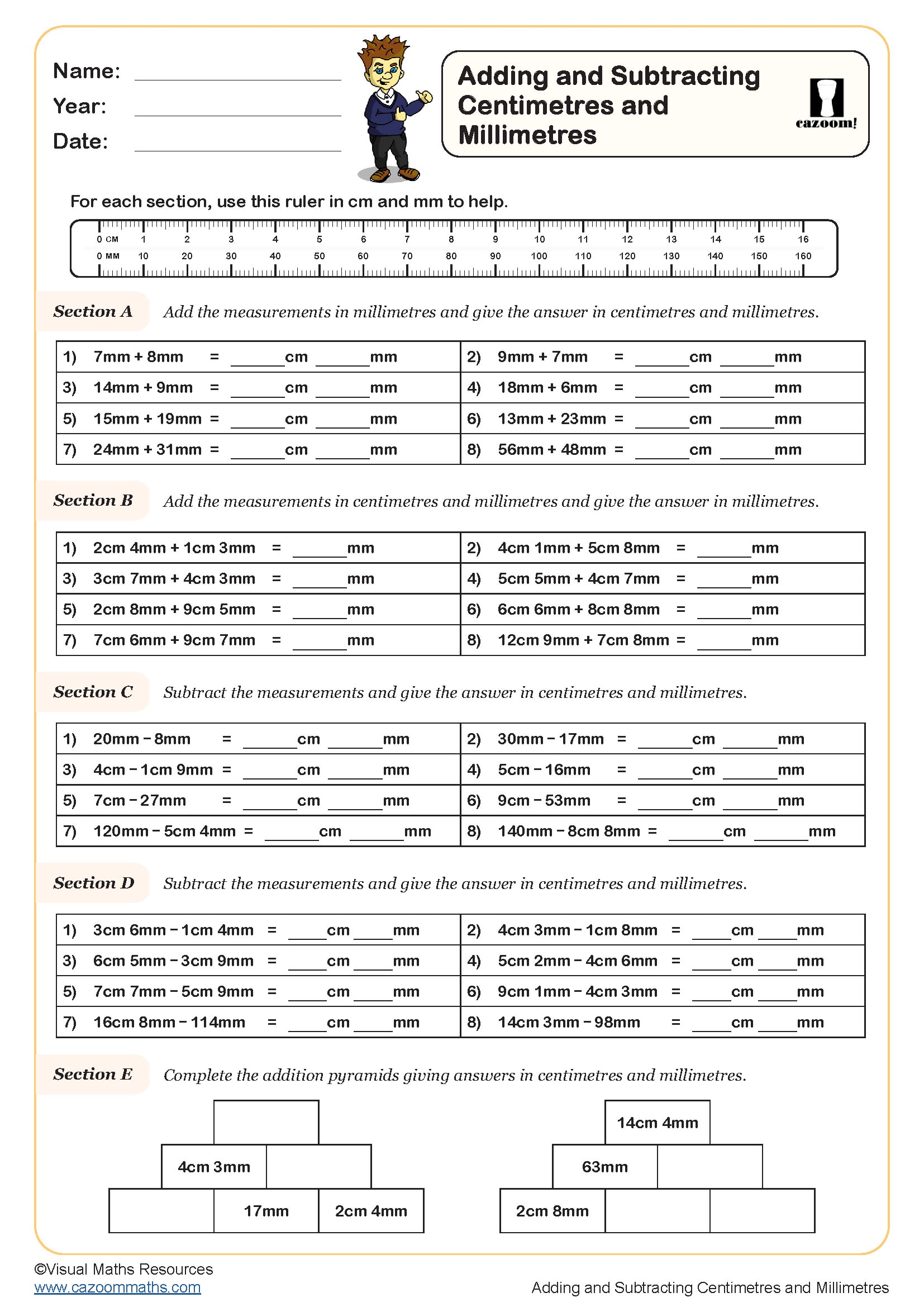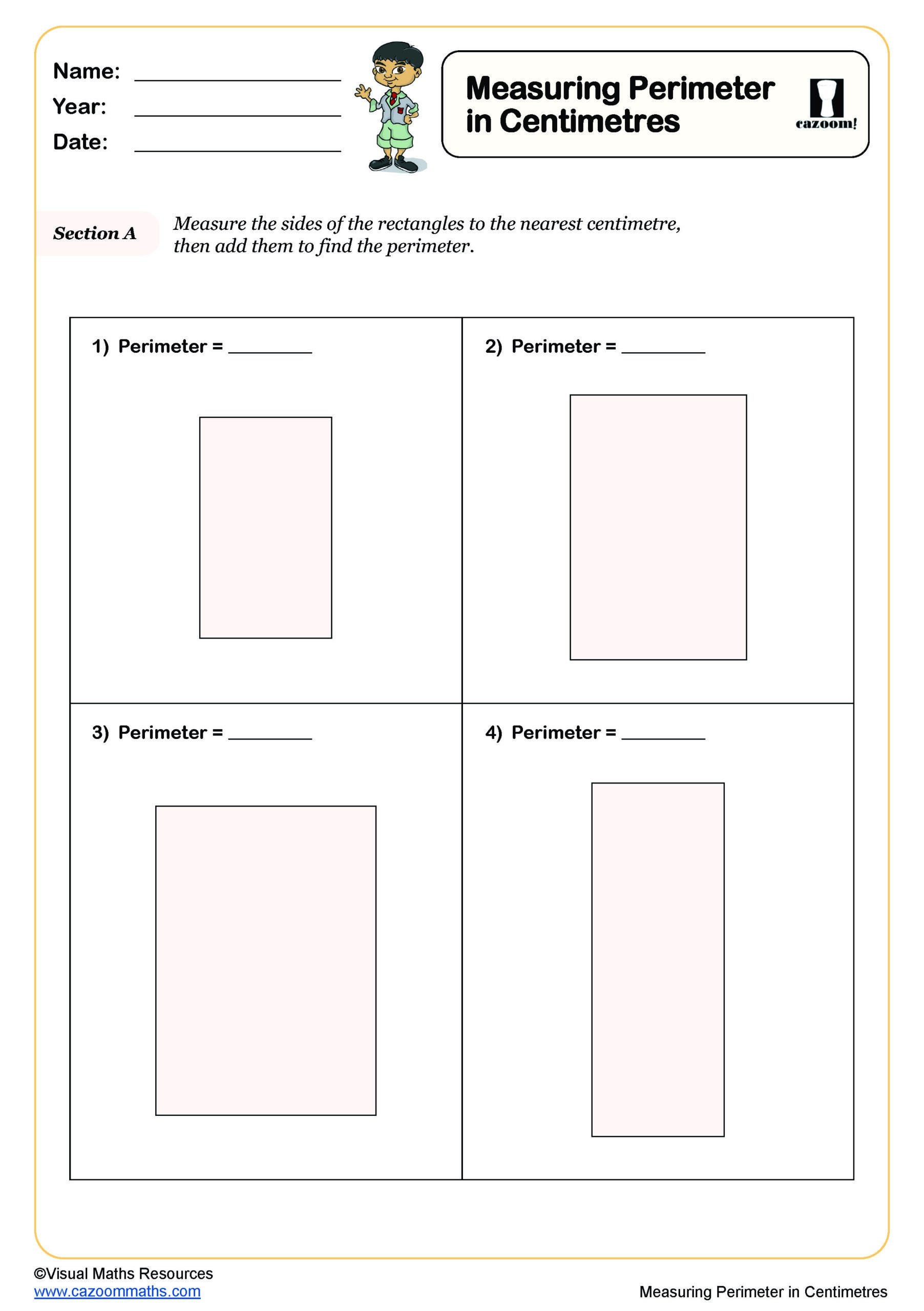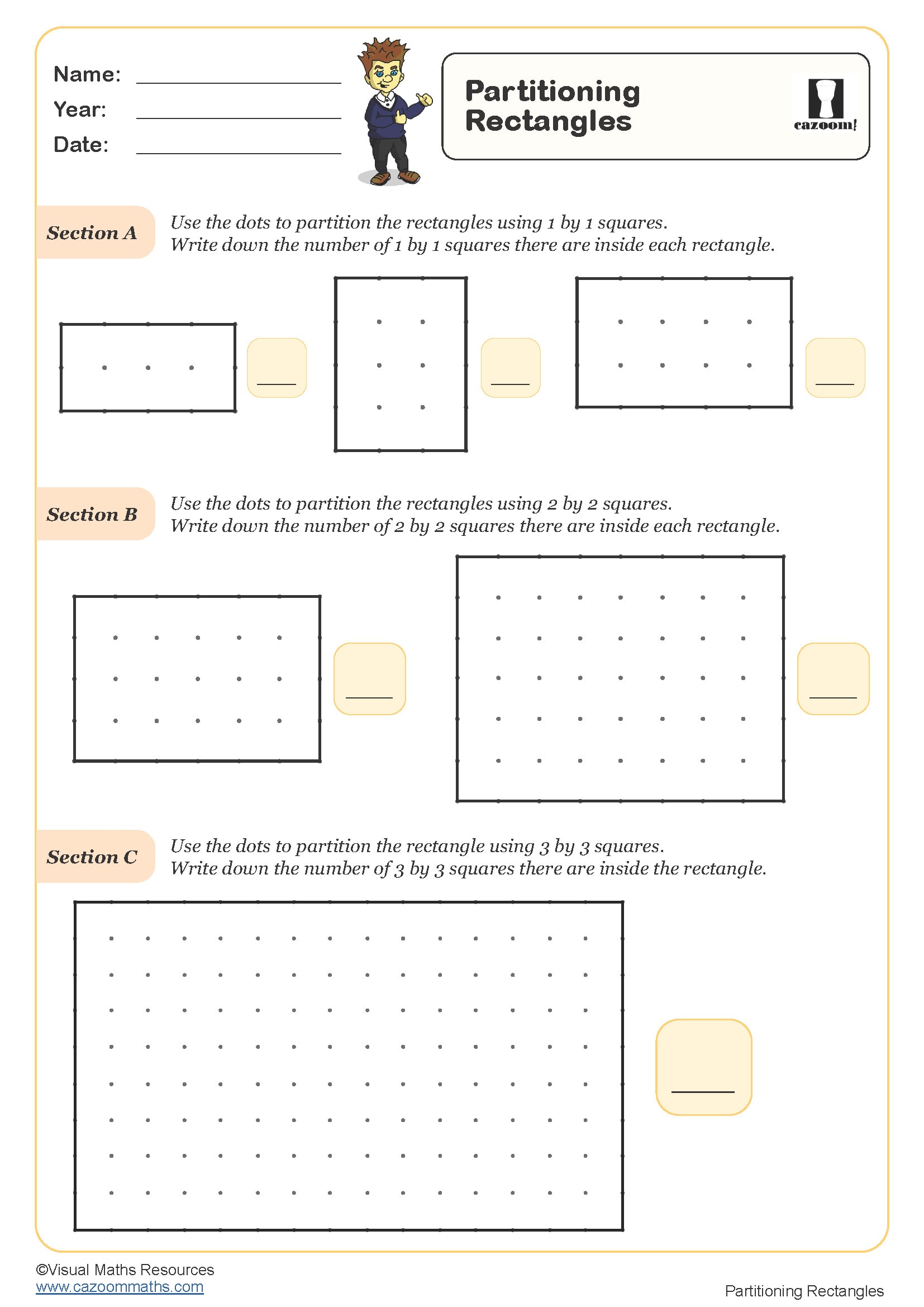Year 3 Area and Perimeter Worksheets
Complete Year 3 Area and Perimeter Worksheets Collection with Step-by-Step Solutions
Cazoom Maths KS2 worksheets begin with simple shape recognition and progress systematically through counting squares to calculate area and measuring edges for perimeter. Each worksheet is created in ready-to-use, printable PDF format and includes detailed worked solutions that show students exactly how to approach each problem, rather than just providing the final answer. Your students will actually understand the 'why' behind each calculation.
Essential Skills Covered in Our Area and Perimeter Activities
Area is simply how much space you can fit inside a shape - think of it like counting all the little squares that would cover your bedroom floor. On the other hand, the Perimeter is the distance you'd walk if you traced all the way around the outside edge of that same shape, like walking around the walls of your room.
The progression of our geometric calculations moves from identifying 2D shapes and their properties through to calculating area by counting unit squares and finding perimeter by adding side lengths. Students particularly enjoy the real-world measurement challenges (measuring classroom objects is surprisingly popular). The worksheets include rectangle and square problems, irregular shape challenges, and plenty of mixed practice to keep things interesting.
Why Year 3 Students Struggle with Area and Perimeter Concepts
Your students in KS2 often confuse area and perimeter because they're learning both simultaneously. The worksheets help separate these ideas clearly before bringing them together. Regular practice with these structured problems builds the mathematical confidence your students need for their end-of-year assessments. The benefits include:
• Stronger spatial reasoning and shape recognition skills
• Improved mental arithmetic through repeated addition practice
• Better understanding of measurement units and their applications
• Increased confidence with word problems involving shapes
• Solid foundation for advanced geometry concepts in Year 4
Practical Applications Where Students Use Area and Perimeter Skills
These measurement skills appear constantly in other subjects - calculating playground space in PE, designing garden plots in science, measuring craft materials in art, and understanding floor plans in geography. The cross-curricular applications make these worksheets incredibly valuable for reinforcing learning across the curriculum. It's actually quite satisfying when students start spotting rectangles and calculating their measurements everywhere they go.
Real-world applications include:
• Calculating the carpet needed for bedroom floors
• Working out the fence panels required for garden perimeters
• Determining paint coverage for bedroom walls
• Planning vegetable garden bed layouts
• Measuring fabric requirements for craft projects
• Understanding sports field dimensions and markings


